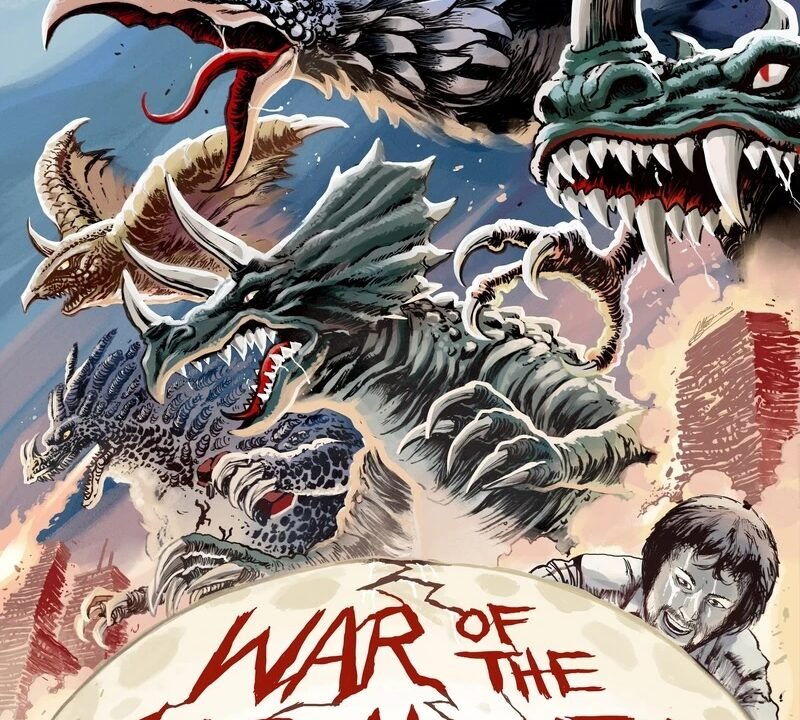
“Godzilla” by Ian Thorne Review
May 2, 2011
“Godzilla vs. Biollante” Review
April 2, 2012
 The H-Man is an obscure sci-fi film produced by Toho Studios in 1958. The film has been relatively unknown in the United States, except for a small smattering of fans, until 2009 when it was released in a DVD 3-pack known as Icons of Sci-Fi: Toho Collection.
The H-Man is an obscure sci-fi film produced by Toho Studios in 1958. The film has been relatively unknown in the United States, except for a small smattering of fans, until 2009 when it was released in a DVD 3-pack known as Icons of Sci-Fi: Toho Collection.
The gentlemen that produced the original Gojira are on helm for this project as well (Ishiro Honda, Tomoyuki Tanaka, and Eiji Tsuburaya). Like Dogora six years later, The H-Man revolves around gangsters, goofy science, and a cast of characters that, at times anyways, seem a bit more interested in ridding the gangsters than they are the gelatinous menace. However, The H-Man is able to successfully project a terrifying antagonist and this is partially due to good writing (up until the latter half) and great effects, even for the time period.
Our main characters are Masada, played by Kenji Sahara; Chikako, played by Yumi Shirakawa; and Detective Tominaga, played by Akihiko Hirata. The overall cast brings out a great performance, however there are scenes where the actors are taking their parts a little too far and it comes off unconvincing. Kenji Sahara, at least in my opinion, has been known to look either dumb-founded or uninterested in many of his earlier roles. This movie is no exception. His Masada develops a quasi love interest with Chikako but nothing serious every really gets off the ground. Yumi Shirakawa’s Chikako is a fabulous character, but is bogged down by playing the damsel-in-distress role one too many times. Her character does come off as strong since she is, or rather, was, the girlfriend of a mobster who got oozed, so-to-speak, by an H-Man earlier in the film. It’s disappointing that she has to take a step or two back just so either one of the two lead male characters can save the day.
The story is rather interesting. Like Matango numerous years ago, I thought the story behind this might be too goofy even for my tastes. But like Matango, although to a lesser extent, I came away feeling pretty satisfied. Takeshi Kimura’s screenplay brings out a haunting atmosphere to this film that only Matango was able to capture (and ultimately surpass). The H-Man is formed when a number of fishermen are exposed to heavy amounts of radiation from an H-bomb detonation; hence the “H” in front of “H-Man.” The exposed men lose their human bodily form and take the form of a gelatinous substance that can take the shape of a human body if they choose to do so. Otherwise, they’re reduced to a pool of muck.
In the Japanese version, it is mentioned that these H-Men still retain their memories; which is why the H-Men end up at the nightclub so often before taking to Tokyo’s sewers at the end of the film. Kimura’s writing really shines in a flashback scene when two surviving fishermen stumble upon the ship that was exposed to the H-bomb. They, and the rest of their crew, climb aboard in hopes to locate survivors. Instead, they’re met with the H-Men version of those lost fishermen. What ensues is a beautifully creepy sequence of the men getting captured, and “vaporized,” by the H-Men. Part of this is also due to Eiji Tsuburaya’s fantastic work with lighting, composites, and effects.
Sadly, after this particular scene, the movie slows down tremendously and becomes a drag to watch. We visit Masada’s lab twice for a series of experiments that take longer to show than what is necessary. There is even a car chase that takes even longer; not to mention a car chase in the 1950s is nowhere near as dramatic as the car chases we get in the movies today. The ending feels very off-kilter in the sense that they, literally, burn an entire section of Tokyo’s sewers in order to kill the H-Men. As you might have guessed, the fire takes the buildings in that section as well. What makes this even more jaw-dropping, is that the river running through the city catches fire, and the fire, of course, continues to spread down the river as well. But no attention is paid to this, because the H-Men are now dead. It makes me wonder if Kimura realized that the H-Men were too powerful and had to resort to such extravagant measures of destroying them, or if he ran of gas to progress the story just enough to give it an adequate running time. My guess is the latter.
For a while, I didn’t quite know what to make of the film. It seemed a bit too awkward for me to even really consider whether or not I liked it. I came to the conclusion that this movie is enjoyable for the most part. The first half is great. The second half…not so much. One could skip the entire second half until the final thirty seconds of the movie and wouldn’t have missed anything important.
Nevertheless, The H-Man employs a simple, yet very unique, antagonist. The chilling atmosphere of the first half of the film is due to the superb writing of Kimura until he begins to stumble in the second half. The effects by Tsuburaya bring the H-Men to life in an eerie fashion of an ominous blue glow with a ship miniature that encapsulates the creepiness of the abandoned boat in Matango. Masaru Sato’s score also adds to the haunting effect of the movie. His signature “boing” sound is heard throughout the film and potentially signals a bad event is about to take place.
In the end, The H-Man is still a film worth seeing.





